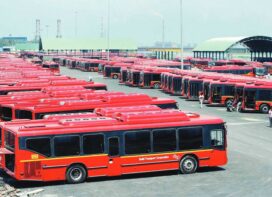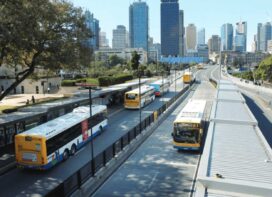

Electrifying fleets of buses catering to the bustling and rapidly urbanising Indian cities is critical to addressing mass transport in a greener manner. Continuing his series of articles on EV ecosystem, Preetesh Singh, Specialist, CASE and Alternate Powertrains, NRI Consulting and Solutions India Pvt Ltd looks at how unlocking the innovative features in e-buses can lead to improved EV penetration.
The Central Government, nodal agencies like CESL and state road transport units (SRTUs) have been active at various levels in modernising and electrifying their fleet. ‘PM E-bus Seva’ approved in 2023 at the central level is another initiative with the aim to deploy 10,000 e-buses within 2025-26 to reach a target of 50,000 e-buses by 2030. In terms of OEM focusing on e-buses, Tata Motors stands out be the dominant player in delivering e-buses in 2023 with 49%, while PMI and Olectra were leaders in 2022 with 33% and 26% share which fell to 11% and 13% respectively. Other dominant OEM players in commercial vehicles, like Ashok Leyland (via Switch Mobility) and VECV, have also consolidated their position in e-buses.
In calendar year 2023, the number of e-buses stood at 2,676 representing an EV penetration of 4.3%. Despite increasing e-bus registrations, EV penetration wise numbers have reduced from 6.7% in 2021 to 4.3% with demand recovery of buses across private and public sector. In terms of overall fleet sizes of SRTUs, at the end of FY’19, the fleet was ~0.15 million units, which has remained roughly the same, of which ~0.13 million units are still diesel vehicles, indicating the extent of scope for electrification for the public fleet alone. If the numbers of private bus fleets are considered the fleet size reaches ~2.3-million-units, majority of which are still diesel operated.

One of the barriers to penetration of EV buses is acquisition cost which can turn to 2-2.5X with a 12m e-Bus costing more than ten million INR and a diesel equivalent costing ~0.4 Million INR. For state road transport units, the adoption of Gross Cost Contract model adopted while tendering the buses have eased the financial risk associated with acquisition and improved operations and maintenance.
Apart from direct carbon reductions and saving on fuel related opex, e-buses are inherently designed for better integration into an intelligent transport system which would add value by optimising scheduling, tracking and real time info to end-consumers
GCC model, even though favourable for SRTUs, despite the commonisation of standards by CESL, faced challenges in getting bids from OEMs in the second phase that were less inclined to support operations and management and issues with the financial health of SRTUs and their ability to make payments on time. Likely introduction of payment security mechanisms from the Ministry of Heavy Industries (MHI) would reduce the SRTU default risk and improve financial viability gap, allowing OEMs to be more competitive in their bids.
Electric buses are inherently designed for better integration into an intelligent transport system which would add value by optimising scheduling, tracking and real time info to end-consumers. When it comes to basic track and trace solutions using GPS & telematics integration, there are solutions that are available aftermarket for ICE buses; however, in case of EVs, advanced telematics solutions are in-built. E-buses with advanced telemetry also provide enhanced safety solutions related to emergency response, video surveillance systems and advanced collision avoidance systems. E-bus have improved vehicle immobilisation capabilities and are thus packed with higher overall safety systems, which reduces risks to fleet managers in case of safety incidents.

E-buses enable improved vehicle-to-infrastructure (V2I) implementations, which would allow buses to communicate with traffic infra systems and networks of charge point operators for improved route optimisation with minimal disruptions. E-buses deployment can enable improved implementation of multi-modal transportation and aid other last-mile mobility as a service (MaaS) offerings. Even though ICE buses have caught up with the trends of predictive maintenance, driven by increased sensor integration, e-buses are far superior in capturing the overall system and enabling a digital twin equivalent with advanced monitoring for batteries, motors and all critical components. Thus, with better telematics integration and predictive maintenance, EVs also fare better compared to ICE buses for overall fleet management, allowing improved tracking and diagnostics, which aids in the higher acquisition price of e-buses.
With SRTUs electrifying their fleet, large private fleet owners are also likely to see the advantage in terms of OPEX and value unlocked by innovative features in e-buses, which lead to improved EV penetration.
The author acknowledges the support from Athul Nambolan, Consultant at Nomura Research Institute (NRI).
 TrafficInfraTech Magazine Linking People Places & Progress
TrafficInfraTech Magazine Linking People Places & Progress


